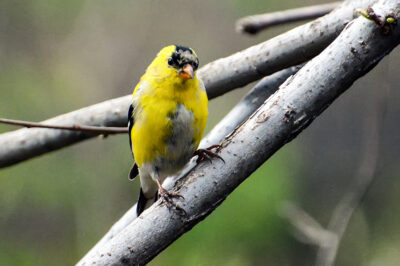
When breeding season is over, most birds change their feathers from the now worn out, flashy ones males needed to impress a potential mate, to the more subdued feathers that will get them more safely to their overwintering site and through the winter. After a spring migration and hectic breeding season, birds’ feathers can be really worn out. But switching feathers in a molt means losing the old ones and growing new ones which takes a lot of energy to do. Some birds lose feathers in a way that makes it possible for them to continue their daily routines with just some flight challenges. Large birds, for example, like eagles, don’t even molt every year. Because of the energy it takes to replace large feathers, they typically will replace individual feathers when they wear out. But other birds, like waterfowl, are too heavy to fly with even a few feathers missing. They may become incapacitated and are extremely vulnerable during this period which can last more than a month for all the feathers to grow in. As a result, where they choose to be when they molt can be extremely important. Birds tend to choose the same safe molting locations each year, and the preservation of these sites is critical.
Birds molt in different ways, but the primary wing feathers are usually the first to go, and it’s apparent when some birds are molting because their wings have spaces in them. These birds can still fly, but they are not as strong as they should be in the air and so need to wait for all their feathers to come in before they start migration. Some migrate before they molt, and others like Tree Swallows, do a little before and a little after migration. Other birds like Crows just take their time molting and it can take up to half a year for them to replace all their feathers! If you see a bird that is looking blotchy on their body, this bird may be molting, like this Goldfinch pictured above.
Want to help birds in molt? Making your yard a good molting habitat isn’t too difficult. Focus on planting native shrubs that will provide good hiding spots for songbirds, and have clean water readily available to help birds keep their feathers clean during the molt and also help control their body temperature.
Here’s a short podcast explaining molt from our friends at BirdNote.